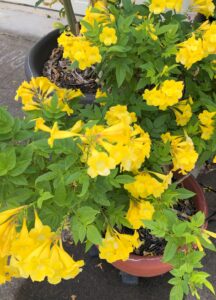
Autumn is arriving, night time temps are dropping. But your garden, especially your containers, have finally come into their own at the end of the season. You’d love to carry some of this beauty on inside a greenhouse. But how do you decide which ones should be sheltered?
That’s a question C.L. Fornari examined in her latest webinar, “Saving Summer.” C.L. is The Garden Lady and resident plant geek at Hyannis Country Garden on Cape Cod. I would like to share some of her observations. She asked us to walk around our gardens and look at several considerations.

Is the container a mixed planting or a singleton?
Her experience is that no matter how gloriously mixed containers are thriving now, the plants are competing to the max, and adding the stressor of going indoors simply invites a decline. So, C.L. suggested narrowing your choices down to single plants.
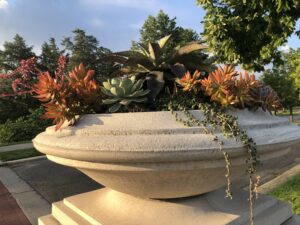
Which ones will thrive with indoor protection?
Any citrus, for instance, which constantly seems to be blooming and fruiting at the same time, should be on your list. Certain tropicals, like hibiscus, can keep flowering into December and January. Tropical gingers, C.L. noted, “are easy to keep.”

Which plants will keep extending the season for edibles?
Herbs, such as thyme or rosemary or even basil, are a great choice for a warm sunny location.

Which ones are uncommon?
C.L. always brings in her Brazilian plume flower (Justicia carnea). And her tri-color sea hibiscus (Hibiscus tiliaceous variegata). The common plants that you will always find in your garden center in the spring can be left outdoors.
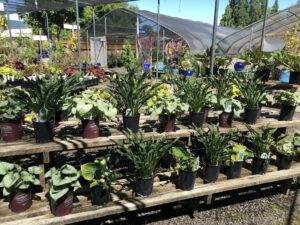
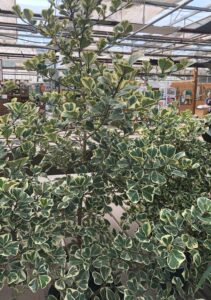
Which ones will be larger and more impressive each year?
Sticks on Fire (Euphorbia tirucalli)) is a good example of an easy-care succulent that will do this. Many begonias, often sold as annuals (Begonia ‘Cathedral Windows’ ) will also reward you if you overwinter them inside.
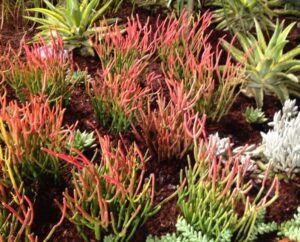
Which ones are prone to bugs?
C.L. mentioned her papyrus ‘King Tut,’ which she had grown indoors with extra water. That constant moisture favored fungus gnats. Now she simply buys a new one in spring. She suggested checking for insects—and other travelers, like frogs, snakes, or mice—at the time containers are brought indoors. “And make up your mind for yourself about whether you want to keep plants that are prone to insects or save ones that are care free.”
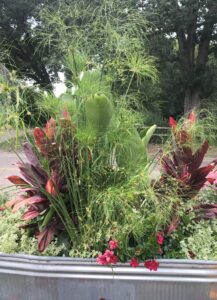

Can you water thoroughly indoors?
One of C.L.’s best tips—put trays under your containers even if they have saucers. “You want to water thoroughly,” she said, “and sometimes that means more water than the saucer can hold.” The trays make watering a lot less messy.
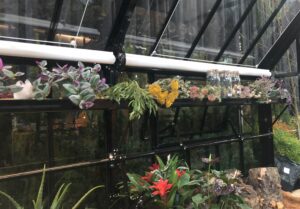
Are you bothered by leaf loss?
Many plants, toward the end of winter indoors, have leaf loss. “Don’t let their pathetic look deter you,” C.L. said. “By March you can top dress with a time-release or organic fertilizer, and they will spring to life again.”

Do you know when to call it quits?
Sometimes, hauling certain plants back and forth becomes too much. “We use a handcart,” C.L. said, “and a lot of swearing.” But she gave us permission to abandon plants or give them away. “If it’s gotten too much, you can say, ‘We’ve had a good run, but it’s time to part.’”
